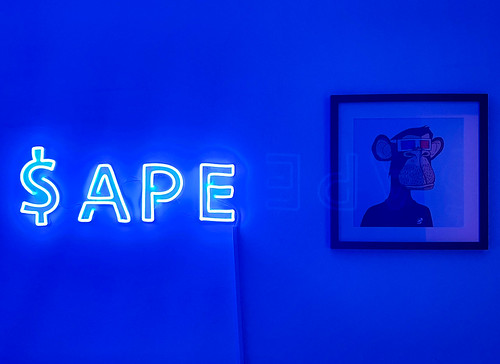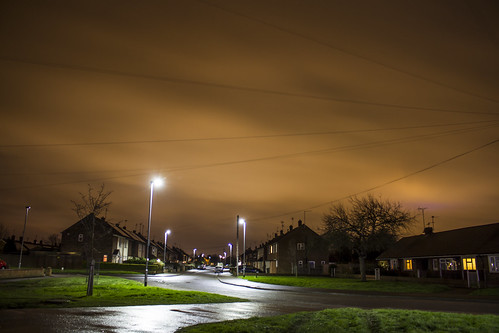
Women runners are setting new records at longer distances, with the marathon the latest to go. What’s behind their newfound success? (It’s not drugs.) CC-licensed photo by Marco Verch Professional Photographer on Flickr.
You can sign up to receive each day’s Start Up post by email. You’ll need to click a confirmation link, so no spam.
It’s Friday, so there’s another post due at the Social Warming Substack at about 0845 UK time.
A selection of 10 links for you. On your marks, gone. I’m @charlesarthur on Twitter. On Mastodon: https://newsie.social/@charlesarthur. On Threads: charles_arthur. Observations and links welcome.
What will replace smartphones? Experts reveal the unsettling reality • Inverse
Marc Saltzman:
»
The near future is even more impressive. Humane’s AI Pin, for example, is a small device you can attach to your shirt or jacket, and it works as a nonphysical smartphone by projecting calls, messages, and info from apps onto a surface (like your hand). As covered by Inverse, this “clothing-based wearable” houses a microphone for hearing your requests, speakers for relaying info (like a smart speaker), and cameras to scan surroundings (in one demo, a chocolate bar is held up to the device and the AI reads its contents and caloric information).
Powered by artificial intelligence, this screenless solution will also have location data and contextual awareness, so you can ask it to tell you the weather or give you directions to walk to the closest Dunkin’ Donuts.
That’s Humane’s grand vision to make everyone more present with reality again, according to the company. “For the human-technology relationship to actually evolve beyond screens, we need something radically different,” said Imran Chaudhri, Humane’s chairman and president, during a TED Talk introducing the “screenless, seamless, sensing” wearable device.
The AI Pin hasn’t launched yet, and nobody outside of the company has used it, so it’s impossible to say whether the wearable is a smartphone replacement or not. It is the most hyped phone alternative, though, simply because Humane’s ranks consist of so many ex-Apple veterans who designed iPhones, iPads, Apple Watches, and Macs.
Similarly, Alexa-powered glasses called Echo Frames can be activated with its wake word and serve as a personal assistant on the go — but they also require a nearby smartphone to do the heavy lifting, via a Bluetooth connection.
…“I don’t think it’ll be a one-size-fits-all scenario but likely a combination of ambient computing, where things around us and a combination of wearables and other devices around us, with or without screens, as well as putting something on our face,” says [Creative Strategies president, Carolina] Milanesi, with a laugh.
«
I don’t think Humane will get any takeup. Ambient computing, sure (already here); smart glasses, surely. When is a different question.
unique link to this extract
India’s weather influencers are faster than official channels • Rest of World
Raksha Kumar:
»
One reason for the weather influencers’ success is their hyperlocal approach. The India Meteorological Department (IMD) publishes its weather predictions for entire districts, across a radius of hundreds of kilometres, while people are seeking “data that is zoomed in,” Kirthiga Murugesan, a crop-weather modelling enthusiast and a PhD student at the Indian Institute of Technology, Madras, told Rest of World.
Umashankar Das is a scientist at the IMD’s branch in the eastern city of Bhubaneswar. He told Rest of World the state does not have the manpower or resources to do the kind of localized work that weather influencers do, contributing to their popularity among the public. “If IMD gives out data that contradicts the predictions of the local weather predictor, they tend to believe the local person,” Das said.
Murugesan is testing a weather model that collects data every four kilometers in the Tirunelveli district of Tamil Nadu. She shares it with local farmers on a WhatsApp group daily and alerts them to changes in the weather patterns. “If a farmer puts fertilizer in his crop and it rains, it is a waste of his money,” said Murugesan, whose father is a sugarcane and rice farmer in Tamil Nadu’s Thanjavur district.
«
“Weather influencers” (not people who influence the weather, but who other people think are worth listening to) are a thing now.
unique link to this extract
Computer science is no longer the safe major • The Atlantic
Kelli María Korducki:
»
computer-science degrees, and certainly not English, have long been sold to college students as among the safest paths toward 21st-century job security. Coding jobs are plentiful across industries, and the pay is good—even after the tech layoffs of the past year. The average starting salary for someone with a computer-science degree is significantly higher than that of a mid-career English graduate, according to the Federal Reserve; at Google, an entry-level software engineer reportedly makes $184,000, and that doesn’t include the free meals, massages, and other perks.
Perhaps nothing has defined higher education over the past two decades more than the rise of computer science and STEM. Since 2016, enrollment in undergraduate computer-science programs has increased nearly 49 percent. Meanwhile, humanities enrollments across the United States have withered at a clip—in some cases, shrinking entire departments to nonexistence.
But that was before the age of generative AI. ChatGPT and other chatbots can do more than compose full essays in an instant; they can also write lines of code in any number of programming languages. You can’t just type make me a video game into ChatGPT and get something that’s playable on the other end, but many programmers have now developed rudimentary smartphone apps coded by AI. In the ultimate irony, software engineers helped create AI, and now they are the American workers who think it will have the biggest impact on their livelihoods, according to a new survey from Pew Research Center. So much for learning to code.
ChatGPT cannot yet write a better essay than a human author can, nor can it code better than a garden-variety developer, but something has changed even in the 10 months since its introduction.
«
The question isn’t “will AI take over programming?” (it won’t) but “will average pay rates go down, and if so, how far?”
unique link to this extract
Facebook let Indian pressure, and its profits, stop removal of violent content • The Washington Post
Joseph Menn and Gerry Shih:
»
Nearly three years ago, Facebook’s propaganda hunters uncovered a vast social media influence operation that used hundreds of fake accounts to praise the Indian army’s crackdown in the restive border region of Kashmir and accuse Kashmiri journalists of separatism and sedition.
What they found next was explosive: the network was operated by the Indian army’s Chinar Corps, a storied unit garrisoned in the Muslim-majority Kashmir Valley, the heart of Indian Kashmir and one of the most militarized regions in the world.
But when the US-based supervisor of Facebook’s Coordinated Inauthentic Behavior (CIB) unit told colleagues in India that the unit wanted to delete the network’s pages, executives in the New Delhi office pushed back. They warned against antagonizing the government of a sovereign nation over actions in territory it controls. They said they needed to consult local lawyers. They worried they could be imprisoned for treason.
Those objections staved off action for a full year while the Indian army unit continued to spread disinformation that put Kashmiri journalists in danger. The deadlock was resolved only when top Facebook executives intervened and ordered the fake accounts deleted.
“It was open-and-shut” that the Chinar Corps had violated Facebook’s rules against using fictional personas to surreptitiously promote a narrative, said an employee who worked on the Kashmir project. “That was the moment that almost broke CIB and almost made a bunch of us quit.”
«
On the plus side, the execs in the US did the right thing: some years of getting it wrong have finally sunk in. But clearly, people in-country are still scared of ramifications.
unique link to this extract
Why Linda Yaccarino took on the wildest job in Silicon Valley • Financial Times
Hannah Murphy:
»
Musk, according to multiple former and current staffers, runs X from his iPhone. To break through, do not send him attachments or documents or spreadsheets. Put everything inside the body of the email. Find a way to make a simple graph fit inside the text box. Take screenshots and embed them. This is what survivors at X have learnt.
For many of the self-selecting group who signed up to the mandatory pledge to adhere to his “hardcore” working culture, going the distance at X has essentially meant adjusting to the working practices of one man. For Yaccarino, the calculation will be a similar one. “The smart thing for her to do is let Elon be Elon and work with it,” says a person with knowledge of their working relationship. “That’s the trade off of getting the CEO role she’s always wanted.”
Early on, Musk brought in a team of executives and staffers from elsewhere in his business empire, including Tesla and The Boring Company, to help steady the ship. Formally, they were dubbed the “transition team”. Informally, they were known as the “goons”, according to ex-staffers. Holdovers found Musk has no tolerance for people who make nonsensical statements in order to sound smart. If you do not know something, admit it, they were told by longtime Musk employees. (Then, tell him you will get back to him on the matter in a reasonable number of hours.) They discovered he cares about working with people who are directly responsible for tasks. (Middle managers were among the first laid off when Musk took the reins.)
Unwavering loyalty is a given. Musk is intensely paranoid about the risk of “saboteurs”, disenchanted employees who might deliberately harm the company. Suril Kantaria, a Silicon Valley entrepreneur who headed finance as part of the transition team, reporting directly to Musk, says the billionaire has a “unique ability” to “create extreme urgency” that gets his team focused. “Wartime at any company is hard, but under Elon it’s next-level intense.”
«
It’s a long piece principally about Yaccarino, but with little bits like this. She seems surprised, Murphy says, that anyone would ask about what it’s like to work with Musk. Kinda sorta related: “NFL issues statement in response to placement of its ads on white nationalist Twitter/X pages“.
unique link to this extract
X can’t get story straight on election disinformation team • The Register
Brandon Vigliarolo:
»
It’s only been a day since rumours began swirling that X, formerly Twitter, had disabled features allowing users to report election misinformation, and the confusion hasn’t been cleared up by duelling statements from platform owner Elon Musk and CEO Linda Yaccarino.
Responding to researcher claims that X had eliminated the ability to report posts for election misinformation – or disinformation of any kind, based on this reporter’s look at the current post reporting options on X – Musk said yesterday that he had axed the entire team.
“Oh you mean the ‘Election Integrity’ Team that was undermining election integrity? Yeah, they’re gone,” Musk posted on X. His statement goes beyond claims from unnamed Twitter insiders who told The Information that half the election integrity team, including its chief, had been chopped.
X CEO Yaccarino had an entirely different take when speaking at Vox’s Code Conference yesterday. Asked why X had cut the team, Yaccarino said it hadn’t. “It’s an issue we take very seriously,” Yaccarino reportedly said.
“And contrary to the comments that were made, there is a robust and growing team at X that is wrapping their arms around election integrity,” she added. Note that Yaccarino didn’t indicate whether it’s the same team that exists now.
«
It’s just bonkers. I wouldn’t trust Yaccarino to have any idea, though I suspect the final clause is right: the election integrity team has been axed, and the task dumped on someone else’s desk.
unique link to this extract
‘When I saw her time, I pinched myself!’ – why women’s running records are being smashed • The Guardian
Kate Carter:
»
Manufacturers have thrown money at their R&D departments to catch up. The latest salvo was fired on Sunday when [Tigist] Assefa set her [women’s marathon world] record while wearing a pair of Adizero Adios Pro Evo 1s, Adidas’s lightest shoe yet, a limited number of which were available through a special draw this week at £400. They last just one marathon.
Environmental implications aside, for the running purist, the existence of supershoes has devalued the pursuit of records. While technology may always advance, they say, such is this step-change that it renders new times entirely meaningless.
But shoes are not the only new tech. There is also wave light technology – small flashing lights placed into the side of athletics tracks that can be set to a specific pace. It means that athletes gunning for a track record know they are on target, lap after grinding lap. Some complain that human pacers are better, others that any pacing at all is “against the spirit of the sport”.
“Technology across so many sports gets better as time passes,” says a former top British marathon runner, Richard Nerurkar. “And that’s what happened in athletics. We just have to accept that, and celebrate the achievements of these athletes, who are now able to run even faster because of technology.”
But to put performances (and times) purely down to shoes is to do athletes a disservice. You can’t just put on these shoes and become a world-beater. Elite runners train hard, month after month, year after year to reach new heights. And in fact, height may be the relevant word when it comes to east African dominance of the sport: most Ethiopians and Kenyans live and train at high altitude, where the lack of oxygen in the air forces the body to increase its red blood cell count. It means that when they return to sea level, they usually find performance is improved for a short period. That’s why elite athletes from around the world go to high-altitude training camps when preparing for big races.
But why are so many women’s records being broken now?
«
The answer seems to be: more participation, especially by younger runners, attracted by the growing prizemoney. But technology is certainly playing a part too.
unique link to this extract
Solar and wind farms can easily power the UK by 2050, scientists say • The Times
Adam Vaughan:
»
Wind and solar power could comfortably supply all the UK’s energy needs by the middle of the century, according to a University of Oxford team.
The researchers calculated that the two renewable technologies could power the nation even after making a conservative estimate that accounted for the amount of land and sea available, energy storage needs, economics and a high future demand for energy.
The analysis found that the UK has enough wind and solar resources to generate 2,896 terawatt hours a year by 2050, or almost ten times today’s electricity needs.
The vast majority, 73%, would come from offshore wind farms, followed by utility-scale solar in fields at 19%. The Solar Energy Industries Association defines a solar project as utility-scale if it generates greater than 1 megawatt of solar energy.
Onshore wind farms, which the government this month promised to unblock in England by changing planning barriers, would supply about 7%.
Solar on rooftops would provide less than 1%, because it was assumed the technology would be largely confined to the south of Britain and only for south-facing rooftops.
The paper by the Smith School of Enterprise and the Environment said wind and solar had been underestimated in Great Britain, and “predominant narratives that renewables are too expensive or impractical are wildly out of date”.
«
Speaking of which…
True cost of Net Zero for every household in Britain revealed amid PM’s green slowdown • The Sun
Ryan Sabey:
»
Households face a net zero bill of £6,070 every year until 2050 despite Rishi Sunak’s green slowdown, it was claimed last night.
A study reveals the price tag could be more than triple official estimates and hit £4.5 trillion — 12 times the cost of Covid.
Report author Ewen Stewart says the public is “left in the dark” over the true cost which could plunge the UK into a financial meltdown.
The economist warned: “The UK’s approach is legally enforcing with little regard to the wider economic and societal impacts.”
The report by the Civitas think tank claims that the independent Climate Change Committee has vastly under- estimated costings.
It says the realistic cost of power generation, which includes doubling electricity output, will be £883bn plus £639bn in financing costs.
«
This is included as an example of how absolute nonsense can get written up. The report’s author made a stunning mistake: he took the cost of installing a single wind turbine (around £1.3m per megawatt) and then three lines later said that was the cost per HOUR of the electricity it generates. Given that a turbine will have a lifespan of about 20 years, and there are 8,760 hours in a year, you can imagine that this overestimates the cost of wind by A LOT.
Yet I can’t find any news articles rebutting the Civitas report. Perhaps nobody thought it worth bothering with. But it got mentions in The Sun (widely read) and The Times (read, arguably, by decision makers). If junk like this poisons the discourse, we have a problem. Even worse: Stewart was warned by Simon Evans, an energy and environment journalist, that he had it wrong before publication. Evans’s Twitter thread on the whole farrago is worth reading. (Available here on a single page without requiring Twitter login.)
UK go-ahead for North Sea oil and gas field angers environmental groups • The Guardian
Mark Sweney and Matthew Taylor:
»
Simon Francis, the coordinator of the End Fuel Poverty Coalition, said: “Hidden in the small print of the deal is that this project can only go ahead thanks to a massive tax break the government is giving to international oil and gas giant Equinor.
“Households struggling with their energy bills will be shocked that the new energy secretary has chosen to hand a multibillion-pound tax break to this Norwegian firm … Figures show that more North Sea production will only give us an extra year of domestic gas, which will be charged to struggling households at global market prices.”
Claire Coutinho, the secretary of state for energy security and net zero, said the UK needed to “be pragmatic”, with oil and gas forecast to still be needed for a quarter of the country’s energy needs in 2050.
“We will not play politics with our energy security,” she posted on X. “The choice we face is this: do we shut down our own oil and gas leaving us reliant on foreign regimes? Do we lose 200,000 jobs across the UK? Do we import fuel with much higher carbon footprints instead? And lose billions in tax revenue?
“We are a world leader at reducing carbon emissions but as much as we will be ambitious, we must be pragmatic.”
«
Francis’s comment about the tax break refers to a story from April about the project:
»
Equinor, the state-owned Norwegian company behind Rosebank, could receive an estimated £3.75bn of tax breaks and tax-funded incentives towards the estimated £4.1bn cost of the development, owing to loopholes in the government’s windfall tax on North Sea fossil fuels, according to estimates from the campaign group Uplift. About 80% of the fossil fuels produced by Rosebank are likely to be exploited, and the development could turn into a net loss of £100m to the UK taxpayer. [Emphasis added – Overspill Ed.]
«
| • Why do social networks drive us a little mad? • Why does angry content seem to dominate what we see? • How much of a role do algorithms play in affecting what we see and do online? • What can we do about it? • Did Facebook have any inkling of what was coming in Myanmar in 2016? Read Social Warming, my latest book, and find answers – and more. |
Errata, corrigenda and ai no corrida: none notified









